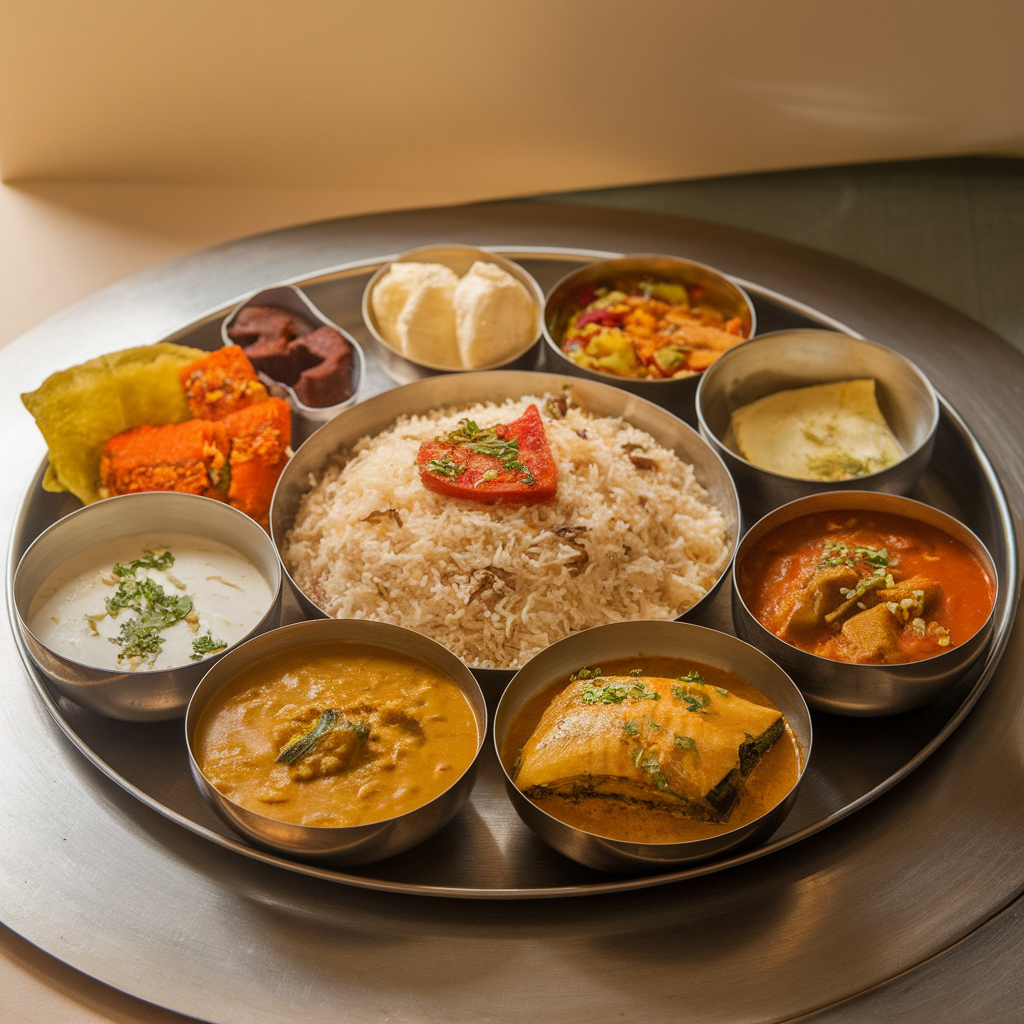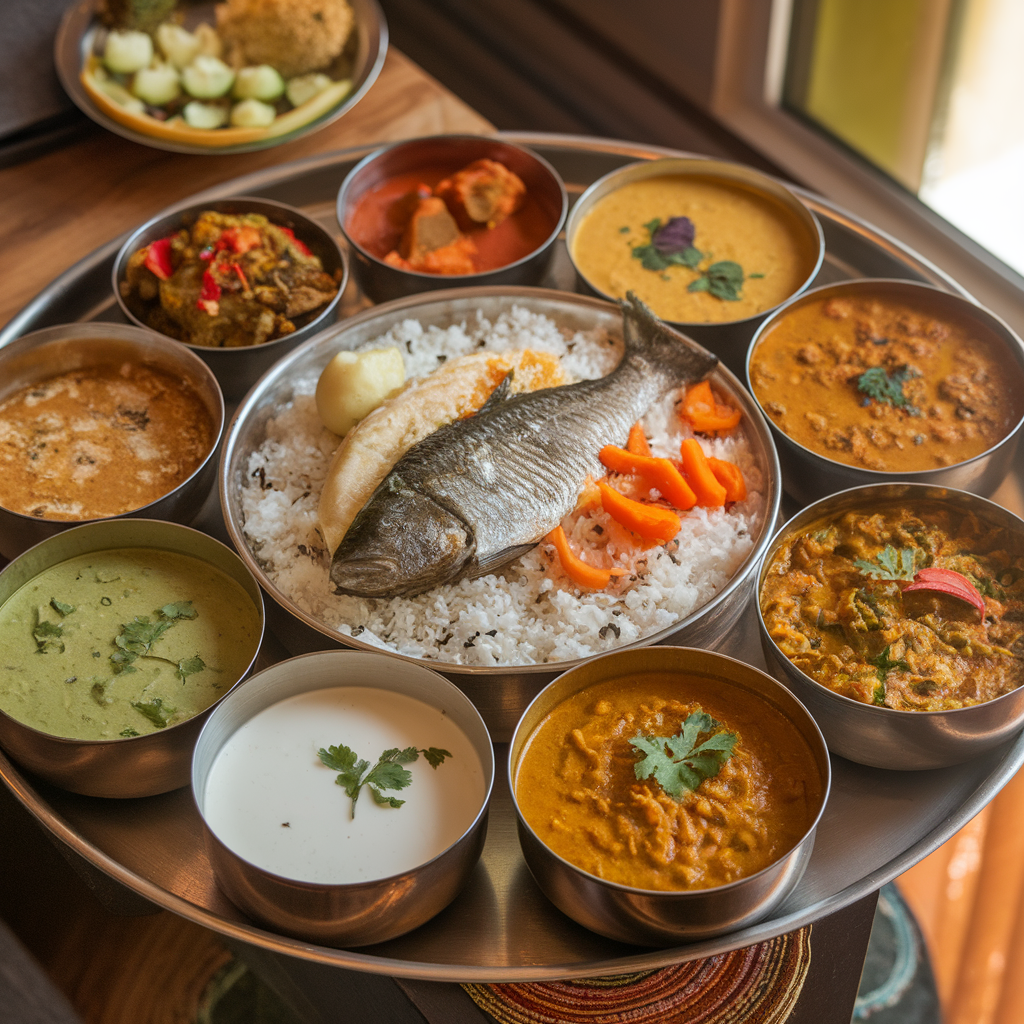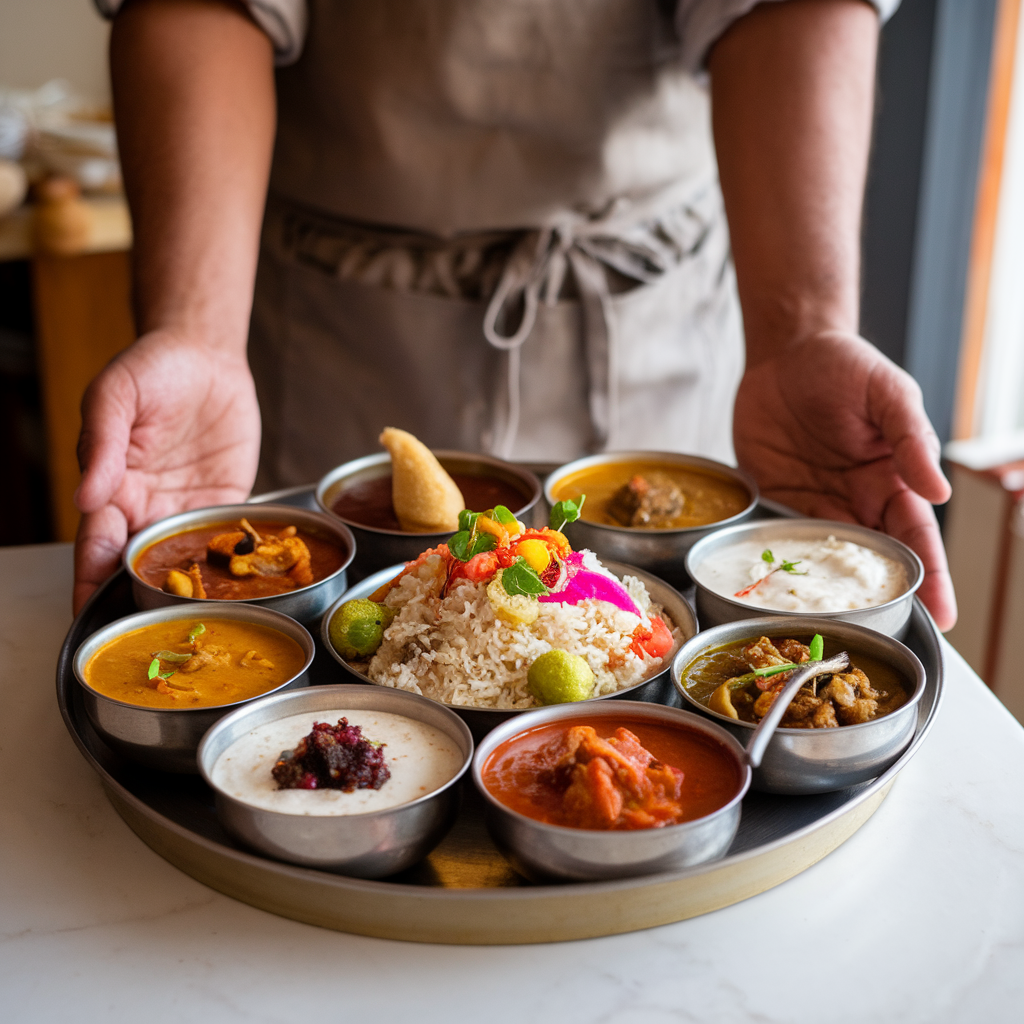
Bengali food thali is more than just a meal; it is a celebration of culture, heritage, and the vibrant flavors of Bengal. A traditional Bengali thali presents a harmonious balance of tastes, textures, and aromas—inviting anyone who sits down to savor an authentic Bangla food experience. This elaborate platter is a testament to Bengal’s rich culinary history, emphasizing local ingredients, fragrant spices, and a delicate balance between sweet and savory.
In this article, we will explore the elements of a traditional Bengali thali, including its signature dishes, the Bengal aesthetic that elevates its presentation, and how it fits into the broader spectrum of Indian cuisine. Whether you are an enthusiast of Indian veg thali or craving the famed curry prawns, understanding the Bengali thali will deepen your appreciation of one of India’s most nuanced regional cuisines. Along the way, we’ll touch upon Indian cuisine photography to capture this visual and gastronomic delight and discuss how iconic accompaniments like butter nan fit into the larger Indian culinary context.
What is a Bengali Thali?
A Bengali thali is a carefully curated platter of assorted dishes served together to offer a complete and satisfying meal. The thali is a meal format common across India, but each region’s version reflects local flavors and culinary traditions. The Bengali thali is unique for its delicate balance of tastes—often blending mustard oil’s pungency, sweet mustard seeds, the warmth of turmeric, and the tang of yogurt or mustard paste.
Typically, a Bengali thali includes a variety of rice preparations, lentils (dal), vegetable sides, fish or meat curries, and sweets. In Bengali households, food is often prepared with great care to maintain the essence of each dish, making the Bengali thali a perfect showcase of Bengali foods.
Core Components of a Traditional Bengali Food Thali
1. Steamed White Rice (Bhat)
Rice forms the foundation of any Bengali meal. In a Bengali thali, perfectly steamed white rice is the star. The rice variety used is typically short-grain and fragrant, absorbing curries and dals with ease. The rice is usually served plain but is the cornerstone that ties all dishes together.
2. Dal (Lentil Soup)
Dal or lentil soup is a staple, providing protein and a mild flavor that balances richer dishes. Commonly used lentils include moong dal, masoor dal, or arhar (toor) dal. The dal is tempered with mustard seeds, dried red chilies, and a splash of mustard oil to enhance the taste.
3. Shutki (Dried Fish) or Fish Curry
Fish is integral to Bengali cuisine, famously known as the “Land of Fish and Rice.” Fish curries like macher jhol or dried fish preparations called shutki offer pungent, layered flavors. The use of mustard seeds, mustard oil, and fresh green chilies makes Bengali fish curries distinct. However, in a traditional Bengali thali, you will often find a mild fish curry cooked in turmeric and mustard paste.

4. Curry Prawns
A luscious curry prawns dish is often a highlight in Bengali thalis, especially during special occasions. The prawns are simmered in a delicately spiced gravy featuring mustard paste, coconut, and a blend of warm spices. This seafood preparation complements the rice and lends a festive touch to the meal.
5. Vegetable Side Dishes
Vegetables like shak (leafy greens), begun bharta (mashed eggplant), kumro bharta (mashed pumpkin), and fried potatoes are common accompaniments. The vegetables are typically lightly cooked or mashed with mustard oil, garlic, and green chilies to retain freshness and flavor.
6. Indian Veg Thali Elements
Bengali thalis often incorporate vegetarian sides typical of Indian veg thali such as aloo posto (potatoes with poppy seeds), cholar dal (Bengal gram lentils), and seasonal vegetable curries. These add variety and reflect Bengal’s agricultural bounty.
7. Pickles and Chutneys
Bengalis love their pickles (achar) made from mango, mustard seed, or chili, adding a tangy kick to the meal. Chutneys made from raw mango or tamarind offer sweet and sour contrasts that stimulate the palate.
8. Sweet Ending (Misti)
No Bengali meal is complete without sweets. Traditional desserts like rosogolla, sandesh, or mishti doi (sweetened yogurt) close the meal with a delicate sweetness, balancing the savory flavors of the thali.
The Bengal Aesthetic: Food Presentation and Cultural Significance
Bengali cuisine is deeply intertwined with its cultural and religious traditions, influencing the Bengal aesthetic of the thali presentation. Unlike the buffet-style meals in some other parts of India, a Bengali thali is meticulously plated on a single large round metal or banana leaf plate called a thali.
The food is arranged thoughtfully: rice in the center, surrounded by small bowls called katoris filled with curries, dals, vegetables, and sweets. Each item has its dedicated space to prevent mixing until eating, allowing each flavor to be appreciated individually.
The use of natural materials, such as banana leaves or brass plates, reflects the cultural emphasis on eco-friendliness and tradition. The colorful array of dishes—golden dals, deep red curries, green vegetable sides, and white rice—creates a feast for the eyes as much as for the palate.
Exploring Indian Cuisine Photography: Capturing the Essence of Bengali Food Thali
The visual appeal of a Bengali food thali makes it a favorite subject in Indian cuisine photography. Photographers seek to highlight the vibrant colors, textures, and intricate plating of the thali. The interplay of light on shiny brass plates, the glossy sheen of curries, and the rustic textures of rice and vegetables capture the essence of Bengal’s culinary artistry.
Using natural lighting and minimal props—often banana leaves or rustic wooden tables—photographers aim to tell a story of tradition and warmth through images. This approach resonates with the Bengal aesthetic, which values simplicity and elegance in everyday life.
Food bloggers and chefs often showcase their Bengali thalis on social media, helping preserve and spread the love for this regional cuisine worldwide.

Butter Nan and Bengali Thali: The Bread Connection
While traditional Bengali thalis center around rice, the influence of wider Indian cuisine introduces breads like butter nan (or naan) into the dining experience, especially in urban and fusion restaurants.
Butter nan, a soft and buttery flatbread baked in a tandoor oven, complements rich curries wonderfully. It’s common to see butter nan served alongside spicy Bengali curries or curry prawns to soak up the luscious gravies.
Though rice remains the soul of a Bengali meal, breads like butter nan add textural diversity and an indulgent touch, enhancing the dining experience for those accustomed to northern Indian cuisine.
Regional Variations of Bengali Thali
Bengali cuisine varies across West Bengal in India and Bangladesh, leading to slight regional differences in the thali offerings.
- Bangladesh Bengali Thali: Often more robust with extra emphasis on fish and mustard oil. Dishes like ilish macher paturi (hilsa fish wrapped in banana leaf) and chingri malai curry (prawn in coconut milk) are popular.
- West Bengal Indian Thali: Focuses on seasonal vegetables and includes delicacies like shorshe ilish (hilsa in mustard gravy) and sweets such as nolen gur (date palm jaggery)-infused desserts.
Despite these differences, the core elements of rice, dal, vegetable sides, fish or prawn curry, and sweets remain consistent.
How to Enjoy Your Bengali Thali
Eating a Bengali thali is an immersive experience. The etiquette encourages mixing small portions of dal, curries, and vegetables with rice using your fingers, allowing flavors to meld naturally.
A typical eating sequence may begin with mild items like dal and vegetable sides, progressing to richer fish or prawn curries. The meal often ends with a sweet note of mishti doi or rosogolla.
Sharing a Bengali thali with family or friends is customary and enhances the communal joy of dining.

Popular Dishes in a Bengali Thali You Must Try
- Shorshe Ilish (Hilsa in Mustard Gravy): Bengal’s iconic fish, hilsa, cooked in a pungent mustard seed sauce.
- Chingri Malai Curry (Prawn Coconut Curry): Creamy and aromatic prawns simmered in coconut milk and spices.
- Aloo Posto (Potato with Poppy Seeds): A mild yet flavorful vegetarian delight.
- Begun Bharta (Mashed Eggplant): Smoky mashed eggplant mixed with mustard oil and green chilies.
- Cholar Dal (Bengal Gram Lentils): Rich and slightly sweet lentils cooked with coconut and spices.
- Mishti Doi (Sweet Yogurt): A traditional Bengali dessert made by fermenting sweetened milk.
The Health Benefits of Bengali Foods
Traditional Bengali foods emphasize seasonal, fresh ingredients, moderate use of spices, and balanced nutrition.
- Fish and prawns provide high-quality protein and omega-3 fatty acids.
- Lentils and vegetables offer essential fiber and vitamins.
- Use of mustard oil adds beneficial fats and antioxidants.
While Bengali cuisine can be indulgent, the focus on natural ingredients and cooking methods like steaming, simmering, and light frying contribute to its healthfulness.
Conclusion: A Bengali Thali is More Than Food—It’s Culture on a Plate
The Bengali food thali represents a rich tapestry of history, geography, and culinary mastery. Each element—from fragrant rice and spicy curry prawns to velvety dal and sweet desserts—tells a story of Bengal’s unique identity.
Through the lens of Indian cuisine photography, the visual artistry of a Bengali thali is captured and shared with food lovers around the world, helping preserve this precious cultural heritage.
Whether you savor it traditionally with hands or with a piece of butter nan dipped in curry, the Bengali thali invites you to enjoy a true feast for the senses—embracing the full Bengal aesthetic in every bite.
So next time you crave an authentic taste of India’s east, dive into the flavors of a Bengali thali and experience the heart of Bangla food like never before.




